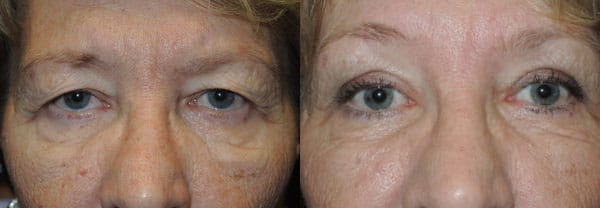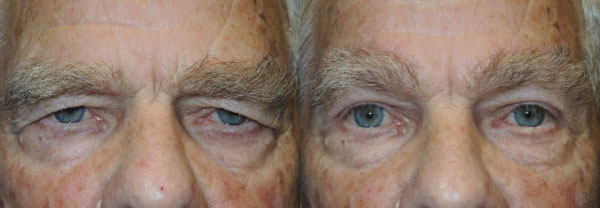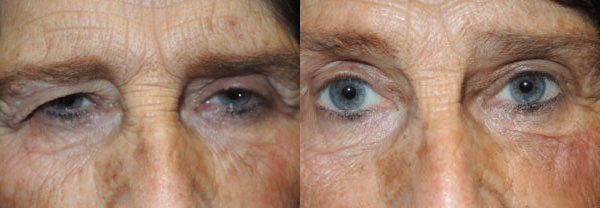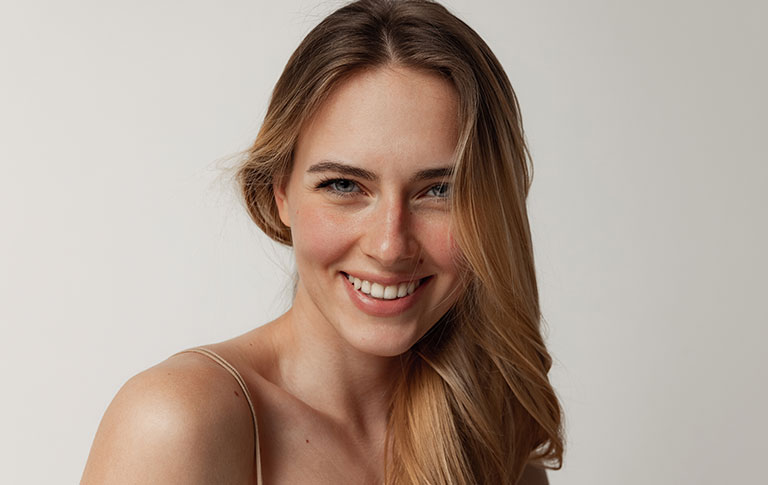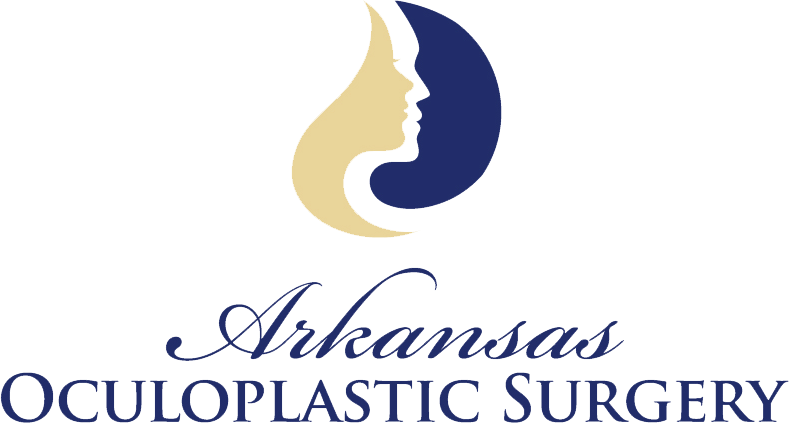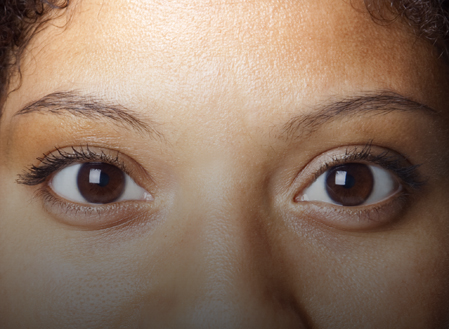
Functional Blepharoplasty in Little Rock
Little Rock Oculoplastic & Facial Cosmetic Surgeon
Blepharoplasty is performed when dermatochalasis, or excess skin, is present on the upper eyelids. Blepharoplasty is frequently performed on the lower eyelids too when there are “bags”. Blepharoplasty can be performed for functional (medically necessary) or cosmetic reasons. Blepharoplasty is more often considered functional for the upper eyelids and is almost always considered cosmetic when performed on the lower eyelids. To learn more about Cosmetic Blepharoplasty, click here to learn more.What is Functional Blepharoplasty?
Functional blepharoplasty is performed when excess skin either hangs over the lashes and obstructs the peripheral vision or when the skin and fat above the upper eyelids are so heavy that they weigh down the eyelids, pushing them down into the way of the patient’s peripheral vision. Medicare, Blue Cross, Health Advantage, Cigna, Aetna, United Healthcare, QualChoice, and all 3rd party payers have their own criteria (or Local Coverage Determinations—LCDs) that set their guidelines for whether or not they will cover your blepharoplasty out of medical necessity. For a blepharoplasty to be functional, the patient must notice improved vision when the excess skin is elevated off of their eyelids. A photo must demonstrate that the upper eyelids are significantly encroaching on the pupil. Most private insurers also require that a visual field test be performed. This test must be performed in a very specific way and show specific findings that meet the insurance company’s LCDs.Photo Gallery
Before & After Photos
When is Functional Blepharoplasty performed?
A functional blepharoplasty of the upper eyelids is performed under local anesthesia, often along with monitored IV sedation. General anesthesia is not required. The incision is made in the patient’s eyelid crease or if there is no defined eyelid crease, the incision is made where an eyelid crease should be—this is usually 6-7mm above the lashes in Caucasian men and 7-8mm in Caucasian women. For Asian men and women, the crease is made much lower. Sometimes in African American men and women, the crease is made higher. The excess skin which is present and can safely be removed is excised. Sometimes heavy, herniating fat is also removed. Once the desired endpoint is reached, the wound is closed with sutures.Recovery Time
Your sutures are removed approximately one week later. Dr. Brock requires that you be seen at approximately one week and 4 weeks post-operatively and any time a visit is indicated based on a call to his office or an expressed concern. It is required that you have a responsible adult with you for 24 hours. They must be able to drive. Most patients will have less bruising and swelling on day 7 than on day 3 and by day 10-14 most patients are approximately 80% healed. Most patients report they have little to no pain. Pain can easily be controlled following this surgery with ice and Tylenol (when you have no contraindications to the medicine). You are instructed to go home or go to your hotel immediately following discharge. On the day of surgery and the next 1-2 days you should be a “couch potato” and “play the sick role.” After about 48 hours you can go places but no strenuous activity is allowed for about 10 days and no bending (this means you do not bend your head below your heart from a seated or standing position), lifting or straining for 7 days. You may feel like bending or lifting, but the blood vessels in the surgical area have not healed enough to withstand that kind of pressure. You can bleed behind the incision placing pressure on your optic nerve, ophthalmic artery, and eye resulting in a surgical emergency, loss of vision, or blindness.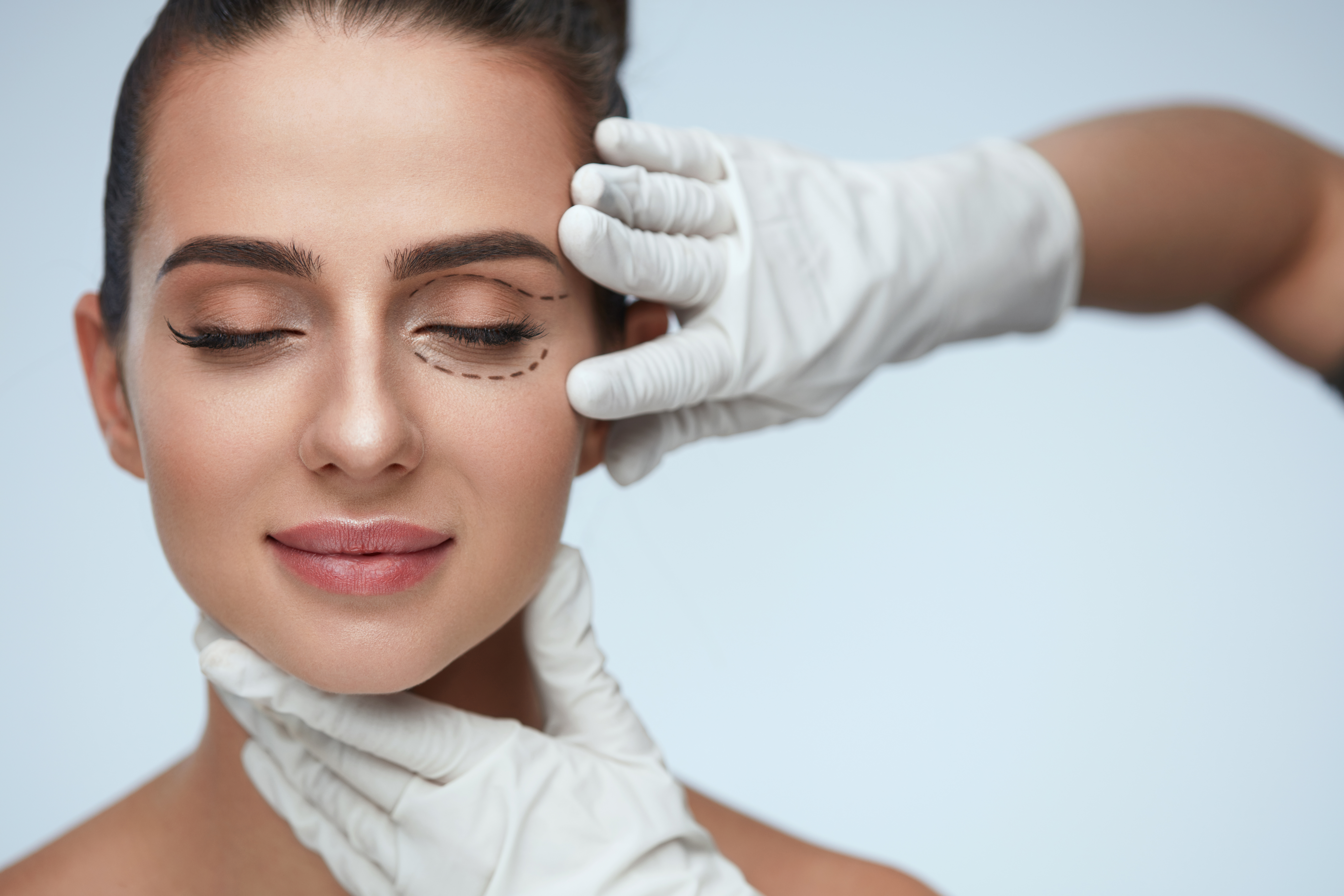
Risks of Functional Blepharoplasty
More common risks include but are not limited to numbness, prolonged bruising, dry eye symptoms, tearing, light sensitivity or irritation, asymmetry, damage to surrounding structures, or the need for further surgery. Please always ask your surgeon any questions at the time of your consultation and only sign your consent when you have discussed and read all of the risks of the surgery. In order to decrease your risk of bleeding it is imperative you report all of your medications or supplements to your surgeon at the time of consultation. Please see a list of medications that can cause bleeding. Although it will be important to come off the medications that cause you to bleed, do not discontinue any prescribed medications such as Clopidogrel (Plavix), Warfarin (Coumadin), aspirin, ——–(Xarelto) others without instructions from your cardiologist or prescribing physician to do so. Many patients who undergo functional blepharoplasty may have other anatomic features that will limit their cosmetic outcome. It is important for patients to recognize this in advance. These features frequently include but are not necessarily limited to drooping of the brow or tail of the brow (aka brow ptosis). Many patients assume that the appearance of “excess skin” can be further improved by taking more and more skin, but in these cases, the outcome can only be improved cosmetically by lifting the brow. Your insurance company will not cover you to have a cosmetic brow lift at the same time as your functional blepharoplasty. Many patients will need to decide if they only want the improvement that their insurance company will allow, or whether they want a cosmetic brow lift at the same time as their functional blepharoplasty. They must realize there are limits to the cosmetic outcome if they only have the procedure that is covered by insurance. It is reasonable to expect your insurance company not to pay for your cosmetic surgery. It is also reasonable for your surgeon to charge for additional cosmetic surgery that takes additional time and is otherwise not medically necessary. Contact us for more info.How Much Does Functional Upper Eyelid Blepharoplasty Cost?
The overall cost of Functional Upper Eyelid Blepharoplasty is affected by anesthesia fees, hospital fees, post-surgery garments, and medications. Price is also impacted by medical tests, surgeon’s fees, and the exact techniques employed.Schedule Consultation
As one of the most well-regarded plastic surgeons performing Functional Upper Eyelid Blepharoplasty in Little Rock, AR, Dr. Wade Brock is here to answer all your questions about Functional Upper Eyelid Blepharoplasty. To confirm whether you are an ideal candidate for Functional Upper Eyelid Blepharoplasty, contact us today to schedule your in-person consultation.Testimonial
I absolutely love Dr. Brock and the entire staff at Arkansas Oculoplastic Surgery. While any type of surgery, especially involving the eye(s), can be concerning or frightening.Related Posts
- Facial Symmetry and Plastic Surgery April 11, 2024

Facial symmetry refers to when the features on one side of the face completely mirror ...
- Tips on Enjoying Successful Oculoplastic Surgery Recovery February 25, 2024

Oculoplastic surgery, a specialized branch of ophthalmic surgery, requires careful attention to the recovery process ...
- COVID-19 Vaccine December 19, 2020

This morning, as I write, brings the close to an exciting week and also a ...

